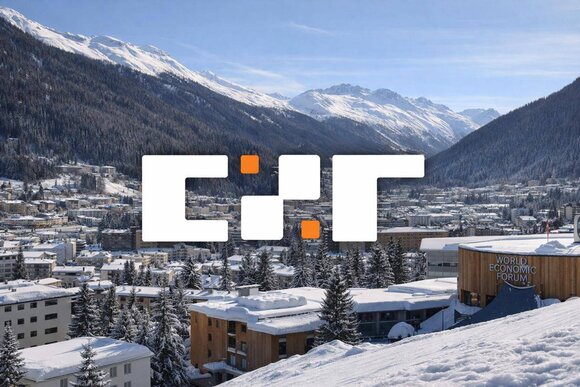Post-tensioning is an operation carried out on-site, consisting of putting the cables under tension after the concrete has been poured through anchors. This method is generally used for large civil engineering structures.
Post Tensioning has been used for concrete structuring since the 1950s under compression in those areas where the load causes tensile stress. It is an efficient method to reduce the mass while keeping the building stable. It makes the building highly resistant to wind, gravity, and seismic forces. The structures that are recommended for Post Tensioning are bridges, elevated slabs, residential foundations, high rise office, and walls. Now Post Tensioning is very popular for building construction.
A Post Tensioning slab company in Dubai brings you this article, which will enlighten you about different aspects of Post Tensioning. PT concretes are more flexible and more robust than conventional concretes. These concretes are also expected to crack less than other concretes. It is because PT concrete reduces the cracking from shrinking ones that are dried out. This concrete also helps in holding all types of cracks that can form in the building. You can get many benefits if you approach PT for constructing your building as their designs are very flexible.
Common things to know about PT
For several decades, post-tensioning prestressing has been used and is developing in many countries to construct all types of buildings. The technique offers many advantages while satisfying the technical and economic requirements. Some facts that are important to know about Post Tensioning are listed below:
- Structure of PT wire: Post Tensioning is made up of high strength steel strand made by braiding of 6 wires around one king-wire, same as hair.
- PT coating: The Post Tensioning is protected against corrosion by a coating known as PT coating, which mainly consists of grease. A post-tensioning slab company in Dubai has also busted some myths about Post Tensioning in the following:
- It is complicated to cut the future opening in Post Tensioning: If future modification of the building is considered in the early stages of design, Post Tensioning structures can be modified like other building construction methods. Design the tendon layout in such a way that it allows future cores and openings.
- Parking garages in Post Tensioning is more expensive than in Precast: The initial costs of Post Tensioned garages can be more than precast parking garages, but maintenance and repair costs are much lower. Post Tensioning is always a better choice if characteristics like better light distribution, durability, and open structure, are the priorities.
- To design Post Tensioning structures, sophisticated finite element analysis software is needed. Finite element software is the computer tools that are mainly used for structure analysis. This analysis is used for the buildings that have complex geometry. Most of the simple building designs are created using 2D strip models formed in equivalent frame design software.
- Post Tensioning suppliers should do reinforcement: It is false thinking that the Post Tensioning supplier should design general zone reinforcement. Zone reinforcement comes under the recording engineer's broad zone because it is his responsibility to prepare this zone.
- More shortening is experienced in Post Tensioned buildings than in the non-prestressed ones: The shrinking of post-tensioned slabs is more than the prestressed ones; this is because it shrinks during concrete curing. However, this volume change is not that significant, so that the additional shortening can be ignored.
- In below-grade applications, Post Tensioning is not used: The structures like parking garages that have been built under the buildings are known as below-grade applications. To get the benefits of Post Tensioning in these below-grade applications, we need a PT specialist.
- If drop panels need to be used to calculate section properties, it should be 1/6 of the span for strength calculations: ACI 318 code confines the size of the drop planes to be 1/6 only for reinforced concrete. But for PT slabs, there are no confinements of size.
- It is good to have more Post Tensioning: It is false as Post Tensioning cannot be a fixture for a poor design. It is the active force on concrete. If it is applied too much, it can become the reason for an overbalancing effect. Such effects can further be a cause of deflection problems, cracking, and severe blowouts.
- Post Tensioning reduces the cost of the material: This myth is true to some extent as Post Tensioning is also the reason for additional cost savings. As the building's height reduces, building façade costs, heating and cooling costs, reshoring, and formwork costs will also decrease.
- If there is a crack in the wedge, it indicates the system defect in Post Tensioning: If a man finds the cracks in the wedges in a Post Tensioning system, he will think it is a defect. But in actuality, it is designed safe built into the system, which allows the wedges to grip on the steel strands more tightly. Because they hold the prestress force in place.
Conclusion:
From all the above, we can conclude that there are many myths associated with Post Tensioning. These create a terrible image for people about PT. But in reality, Post Tensioning is one of the conventional building methods. PT improves the building strength, and there is also an option for future modification in PT. It does not need any such software for designing. PT also reduces the cost of material per project and makes very cost-effective designs.
A Post Tensioning slab company in Dubai improves post-tensioning technology to make it even more cost-effective and robust. They can construct almost all structure shapes while reducing construction time, materials, costs, and other environmental impacts.
Article Written and Edited by Mrunang Rathod
About International Construction Supplies (ICS)
International Construction Supplies (“ICS”) is an Australian owned and operated company with over 20 years' experience manufacturing and supplying specialised construction products to both the Prestressed and Post Tension industry and the wider construction industry as a whole.
Media Contact
International Construction Supplies LLC
Tel: + 971 4 320 5466
Fax: + 971 4 333 7466
Email: [email protected]
Ras Al Khor Industrial 3,
Dubai, United Arab Emirates
PO Box 73476







